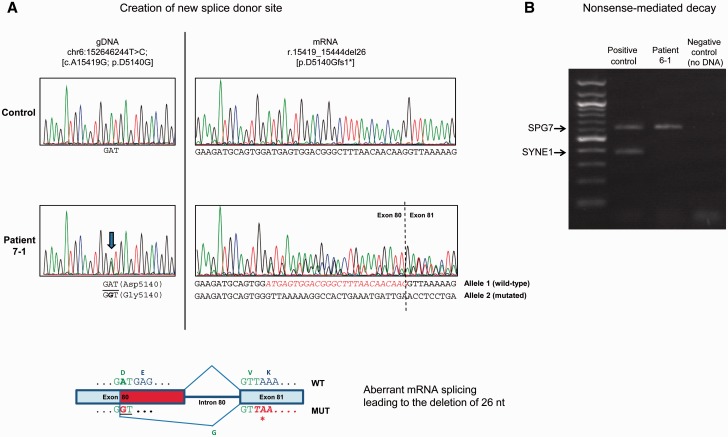Figure 2.
Exemplary mechanisms of SYNE1 mutations. ( A ) An exonic base exchange leads to activation of a cryptic splice site. ( A ) SYNE1 transcript analysis reveals that the c.15419A > G (p.D5140G) mutation (identified in Patient 7-1) creates a new splice donor site within exon 80 (GT, underlined in bottom panel) resulting in a 26-bp deletion (p.D5140Gfs1*). Top left : Sequence analysis of PCR products of amplified genomic DNA showing the A-to-G variant (minus strand) that changes codon 5140 from G A T (Asp) to G G T (Gly). Top right : Sequence analysis of amplification products following reverse transcriptase-PCR of SYNE1 transcript (exons 78–82) from patient’s cells showing the presence of the 26-nt deletion (r.15419_15444del26). Bottom : Schematic diagram showing the aberrant splicing mechanism which leads to the premature truncation of the protein through the deletion of 26 nucleotides in exon 80 (in red). Premature TAA termination codon in exon 81 is shown in bold red italics. ( B ) Truncating SYNE1 mutations can lead to nonsense-mediated decay of SYNE1 mRNA. SYNE1 mRNA carrying the p.L132* and the p.G4752Efs*10 null mutations undergoes nonsense-mediated decay. PCR amplification from retro-transcribed mRNA was carried out with primers specific for SYNE1 (exons 4–9) and SPG7 (exons 6–10) transcripts. Note the complete absence of the SYNE1 mutant transcript in Patient 6-1 as compared to the control.

